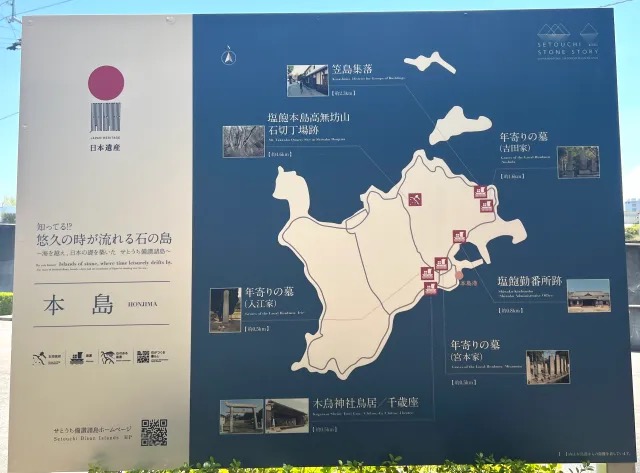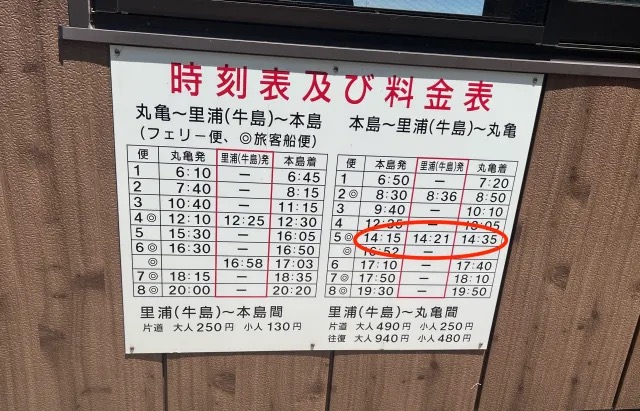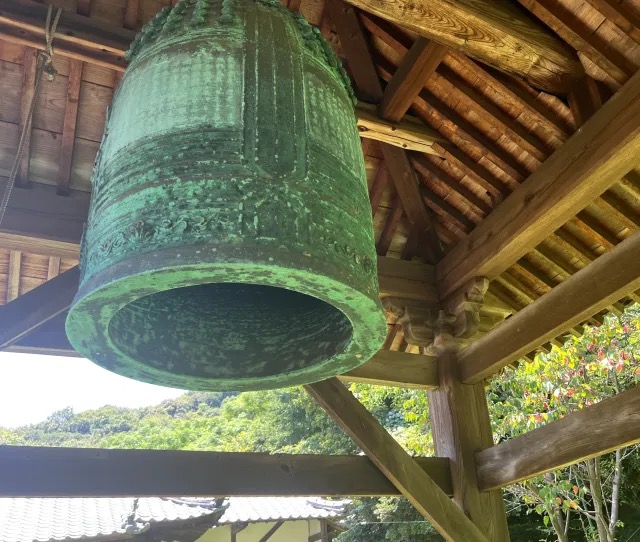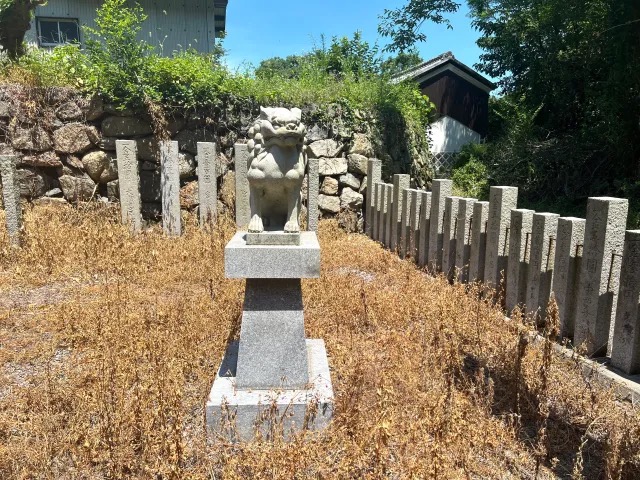
Welcome to one of the least explored regions in Japan.
Japan truly is an island nation — in addition to the country’s four main islands of Hokkaido, Honshu, Shikoku, and Kyushu, there are over 3,000 smaller islands to discover, and some of them are home to tiny populations.
One such island is Ushijima (literally “Cow Island“), which belongs to Kagawa Prefecture and sits off the coast of Shikoku, in the Seto Inland Sea. Home to a population of only 10, the island is easily accessible from Kagawa’s capital city of Takamatsu.
▼ The first leg of the journey involves a 40-minute train journey on the Yosan Line from Takamatsu Station to Marugame Station.
From Marugame Station, walk 10 minutes to the Marugame Port Ferry Terminal, where the daily ferry will take you over to Ushijima in 15 minutes.
▼ There’s only one ferry a day, leaving here at 12:10 p.m., so you’ll want to keep that in mind when visiting.
▼ A round-trip ticket to the island costs 940 yen (US$6.43).
Ushijima isn’t the final destination for the ferry, as it continues on to a larger island called “Honjima” (“Main Island”).
▼ Honjima
This is a great port for island hoppers, as you can also head out to other islands, including one called “Hiroshima” (“Broad Island”), which is not to be confused with the famous city of Hiroshima on the mainland.
▼ Hiroshima
These islands are largely unknown and unvisited by foreign visitors, but Ushijima is the most unexplored out of all of them.
▼ The trip to Ushijima starts with a ride on the Nijimaru ferry.
▼ On a regular day, you’ll find less than a dozen passengers on board.
▼ The journey is a pleasant one, taking you through the Seto Inland Sea.
▼ After about 15 minutes, the ferry slows and approaches the isolated island port of Satoura on Ushijima.
▼ Stepping off the ferry, you’ll feel as if you’re stepping into a remote, unexplored region.
When our reporter Kouhey visited, the only other person to alight here was a postal worker, and given that he was here to deliver the post, Kouhey was the only sightseer. As a passionate island hopper, Kouhey felt a flutter of excitement at the adventure ahead of him, but before setting out to explore, he made sure to check the time for the return ferry so he wouldn’t be stranded here overnight.
▼ The ferry back to Marugame Port departs at 2:21 pm, so he had about two hours to explore the island.
▼ There are two villages on the island, with the first being Satoura, located near the port.
▼ Walking towards the village from the port, you’ll come across stone lanterns and old houses…but not a soul in sight.
▼ Further into the village are buildings that appear to be part of an old temple complex.
▼ The signboard here reveals that this is indeed a temple called Gokuraku-ji.
▼ Passing through the gate reveals a temple overrun by weeds.
The site is home to Muken no Kane, a temple bell that’s been designated as a cultural property by Marugame City.
Legend has it that anyone who rings this bell will be able to achieve prosperity but will eventually fall into ruin. Kouhey wasn’t going to take any chances with the bell, so he continued on, coming to the next stop on the trail…
▼…an abandoned shrine called Hijiri.
To get to the next village, you’ll need to head back to the port on the Seto Inland Sea, passing by the Red Lighthouse, one of the symbols of the island, where you can enjoy panoramic views that stretch out towards the famous Seto Ohashi Bridge on the horizon.
▼ The road to Koura Village is another quiet and beautifully scenic one that takes you past old houses and gardens.
The only sign of life in the area was the manicured gardens and well-maintained rice paddies around this farmhouse.
It really feels like a place that time forgot, and although Kouhey was yet to spy any of the island’s inhabitants, there were signs of their existence at the Ushijima Assembly Hall.
▼ This sign by the road points towards “Ushijima’s Showa Photo Exhibition” being held at the hall.
Like the rest of the island, there were no people at the Assembly Hall, but the door was unlocked for visitors to step inside and view the exhibition.
▼ The interior looked like an old private house that had been renovated.
Stepping into the next room revealed a number of photos showing Ushijima during the Showa era (1926-1989).
Although the current population of Ushijima is reportedly less than 10, these photos indicate the island was once a vibrant hub of activity.
▼ A school sports day event on Ushijima with children from Teshima (手島), Honjima (本島), and Hiroshima (広島).
▼ Leaving the meeting hall and walking back towards Koura Village, the scenery was beautiful.
There were more signs of human life in this village, but the only sounds to be heard were the chirping of birds and insects.
There were no vending machines or shops on the island, but there is a guesthouse. However, this business has to procure food and other supplies from outside the island so reservations are necessary.
▼ Passing through the village takes you back to…
▼ …the endless expanse of the Seto Inland Sea.
▼ Returning to the port, there were more graves than residents at a small cemetery overlooking the coast.
At the port, Kouhey met the postal worker who’d previously gotten off the ferry with him a couple of hours earlier. As they waited for the ferry, they struck up a conversation, where the postal worker told him more about the island.
Apparently the island has a circumference of 4.2 kilometres (2.6 miles) and a surface area of 0.84 square kilometres (0.32 square miles). It gets its “Cow Island” name due to the fact that it was once used for grazing, although its history stretches back to the Edo Period (1603-1868), when it was the home base for a ship owned by Maruo Gozaemon, a former samurai-turned-rich-merchant who was known as the “Sea King of the Inland Sea“. Members of the Maruo clan are buried on the island, accounting for some of the graves that Kouhey had passed earlier.
▼ After learning about the history of the island, the return ferry arrived.
Although his time on the island was short, it turned out to be an adventure that left an indelible mark on Kouhey’s soul. This expanse of nature is one that remains totally overlooked by visitors to Kagawa Prefecture, making it an island paradise only frequented by locals and those in-the-know. Now that you know about it too, you might want to add it to your travel itinerary, along with this small island closer to Tokyo.
Reference: Marugame City
Photos © SoraNews24
● Want to hear about SoraNews24’s latest articles as soon as they’re published? Follow us on Facebook and Twitter!
[ Read in Japanese ]

















































 We deeply regret spending five hours on this artistic Japanese island (we should have spent more)
We deeply regret spending five hours on this artistic Japanese island (we should have spent more) A heavenly trip to Japan’s Demon Island in the Seto Inland Sea【Photos】
A heavenly trip to Japan’s Demon Island in the Seto Inland Sea【Photos】 Japan Travel: Exploring Manabeshima cat island
Japan Travel: Exploring Manabeshima cat island Kuroshima, a remote, heart-shaped island in Okinawa where there are more cows than people
Kuroshima, a remote, heart-shaped island in Okinawa where there are more cows than people You can be on this beautiful Japanese island in less than two hours from downtown Tokyo
You can be on this beautiful Japanese island in less than two hours from downtown Tokyo Disillusionment at Tsukiji’s tourist-target prices led us to a great ramen restaurant in Tokyo
Disillusionment at Tsukiji’s tourist-target prices led us to a great ramen restaurant in Tokyo Why you shouldn’t call this food “Hiroshimayaki” if you’re talking to people from Hiroshima
Why you shouldn’t call this food “Hiroshimayaki” if you’re talking to people from Hiroshima Japan may add Japanese language proficiency, lifestyle classes to permanent foreign resident requirements
Japan may add Japanese language proficiency, lifestyle classes to permanent foreign resident requirements 7-Eleven Japan starts new temporary luggage storage service in over 300 branches
7-Eleven Japan starts new temporary luggage storage service in over 300 branches Ghibli Park opens final area to first visitors, with stunning new attractions and shops 【Videos】
Ghibli Park opens final area to first visitors, with stunning new attractions and shops 【Videos】 7-Eleven Japan has a hack for creating insanely delicious potato chip rice meals
7-Eleven Japan has a hack for creating insanely delicious potato chip rice meals Uniqlo Ukiyo-e Blue T-shirts: A cool-hued reinterpretation of some of Japan’s greatest paintings
Uniqlo Ukiyo-e Blue T-shirts: A cool-hued reinterpretation of some of Japan’s greatest paintings Starbucks on a Shinkansen bullet train platform: 6 tips for using the automated store in Japan
Starbucks on a Shinkansen bullet train platform: 6 tips for using the automated store in Japan Turn a persimmon into a pudding with one simple ingredient
Turn a persimmon into a pudding with one simple ingredient Oscar-winning screenwriter Roger Avary on KonoSuba movie: “It’s the reason cinema was invented”
Oscar-winning screenwriter Roger Avary on KonoSuba movie: “It’s the reason cinema was invented” Starbucks teams up with 166-year-old Kyoto doll maker for Year of the Horse decorations【Photos】
Starbucks teams up with 166-year-old Kyoto doll maker for Year of the Horse decorations【Photos】 Tokyo’s Tsukiji sushi neighborhood asks tour groups to stay away for the rest of the month
Tokyo’s Tsukiji sushi neighborhood asks tour groups to stay away for the rest of the month Street Fighter Hadouken Churros to be launched and eaten in Tokyo, Okami pudding on offer too
Street Fighter Hadouken Churros to be launched and eaten in Tokyo, Okami pudding on offer too Japanese woman mistaken for bear
Japanese woman mistaken for bear Return of Totoro sequel short anime announced for Ghibli Park
Return of Totoro sequel short anime announced for Ghibli Park Starbucks Japan releases new zodiac chilled cup drink for 2026
Starbucks Japan releases new zodiac chilled cup drink for 2026 Is this the most relaxing Starbucks in Japan?
Is this the most relaxing Starbucks in Japan? Japan’s human washing machines will go on sale to general public, demos to be held in Tokyo
Japan’s human washing machines will go on sale to general public, demos to be held in Tokyo Japanese train company is letting fans buy its actual ticket gates for their homes
Japanese train company is letting fans buy its actual ticket gates for their homes Is China’s don’t-go-to-Japan warning affecting tourist crowds in Tokyo’s Asakusa neighborhood?
Is China’s don’t-go-to-Japan warning affecting tourist crowds in Tokyo’s Asakusa neighborhood? Starbucks Japan unveils new Christmas goods and a rhinestone tumbler that costs 19,500 yen
Starbucks Japan unveils new Christmas goods and a rhinestone tumbler that costs 19,500 yen Tokyo considering law requiring more trash cans following litter increase in heavily touristed area
Tokyo considering law requiring more trash cans following litter increase in heavily touristed area Nintendo’s Kirby now delivering orders at Kura Sushi restaurants, but not in Japan
Nintendo’s Kirby now delivering orders at Kura Sushi restaurants, but not in Japan Tokyo event lets you travel back in time, for free, to celebrate 100 years since Showa era start
Tokyo event lets you travel back in time, for free, to celebrate 100 years since Showa era start Survey asks foreign tourists what bothered them in Japan, more than half gave same answer
Survey asks foreign tourists what bothered them in Japan, more than half gave same answer Japan’s deadliest food claims more victims, but why do people keep eating it for New Year’s?
Japan’s deadliest food claims more victims, but why do people keep eating it for New Year’s? We deeply regret going into this tunnel on our walk in the mountains of Japan
We deeply regret going into this tunnel on our walk in the mountains of Japan Studio Ghibli releases Kodama forest spirits from Princess Mononoke to light up your home
Studio Ghibli releases Kodama forest spirits from Princess Mononoke to light up your home Major Japanese hotel chain says reservations via overseas booking sites may not be valid
Major Japanese hotel chain says reservations via overseas booking sites may not be valid Put sesame oil in your coffee? Japanese maker says it’s the best way to start your day【Taste test】
Put sesame oil in your coffee? Japanese maker says it’s the best way to start your day【Taste test】 The top 10 annoying foreign tourist behaviors on trains, as chosen by Japanese people【Survey】
The top 10 annoying foreign tourist behaviors on trains, as chosen by Japanese people【Survey】 No more using real katana for tourism activities, Japan’s National Police Agency says
No more using real katana for tourism activities, Japan’s National Police Agency says Starbucks Japan reveals new sakura drinkware collection, inspired by evening cherry blossoms
Starbucks Japan reveals new sakura drinkware collection, inspired by evening cherry blossoms Japan’s Island of Sea Cats: A unique site you won’t find in tourist guides
Japan’s Island of Sea Cats: A unique site you won’t find in tourist guides An island-hopping visit to the Setouchi International Art Festival!
An island-hopping visit to the Setouchi International Art Festival! Osaka to Fukuoka for less than 40 bucks? It’s possible with Japan’s overnight ferry
Osaka to Fukuoka for less than 40 bucks? It’s possible with Japan’s overnight ferry Japan’s “cat island” Aoshima is being overwhelmed by tourists
Japan’s “cat island” Aoshima is being overwhelmed by tourists Japan’s 10 best Ferris wheels for beautiful views, as chosen by travelers【Survey】
Japan’s 10 best Ferris wheels for beautiful views, as chosen by travelers【Survey】 Japan travel bucket list: top places to visit in each prefecture before you die【Part II】
Japan travel bucket list: top places to visit in each prefecture before you die【Part II】
Leave a Reply